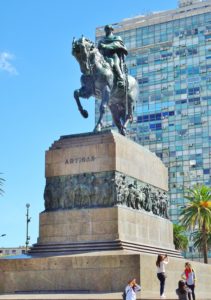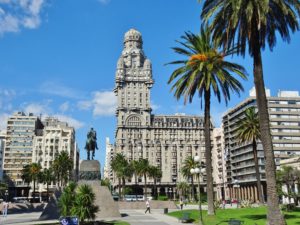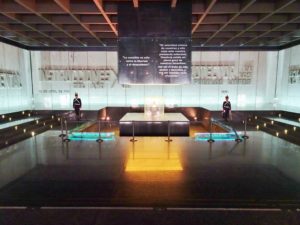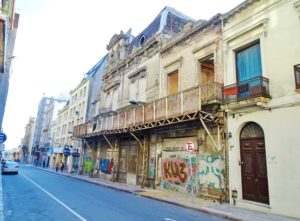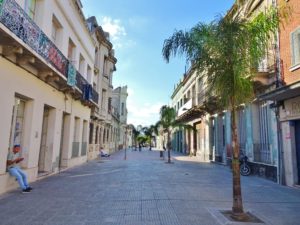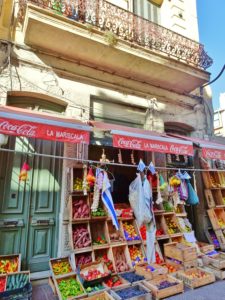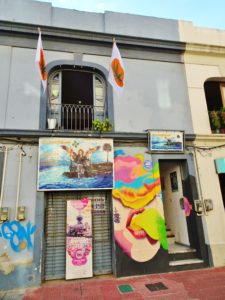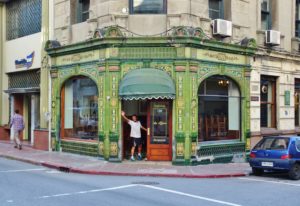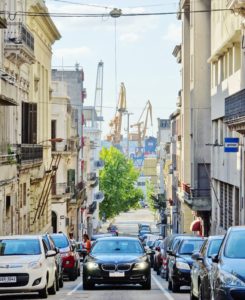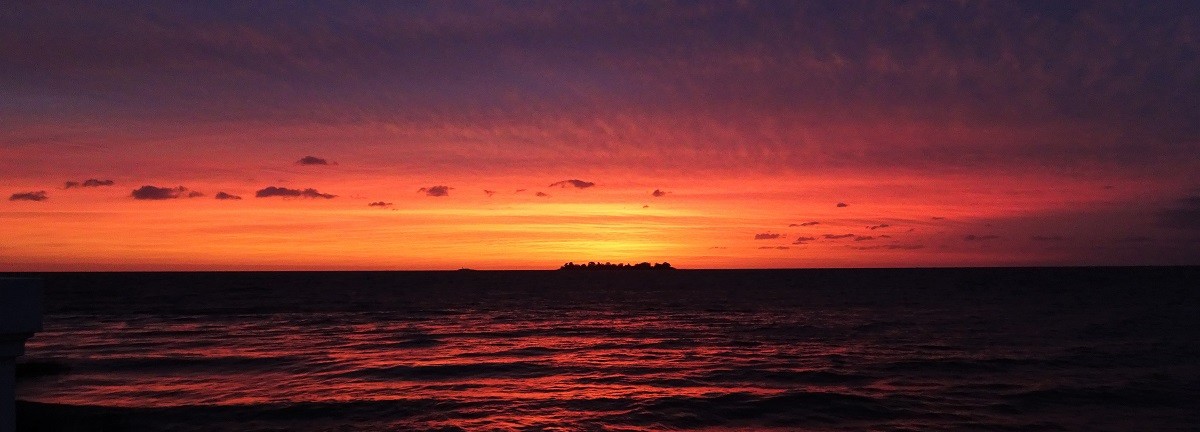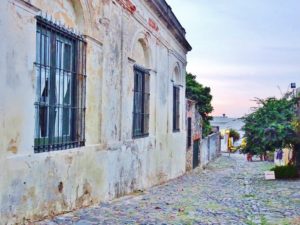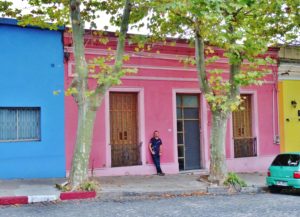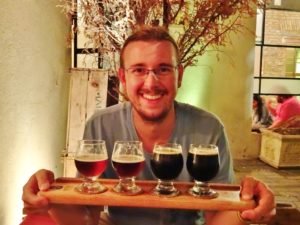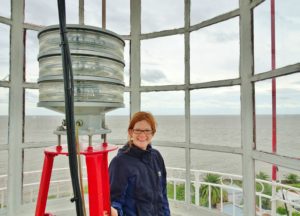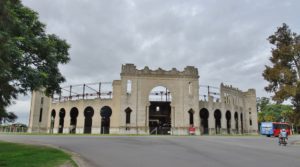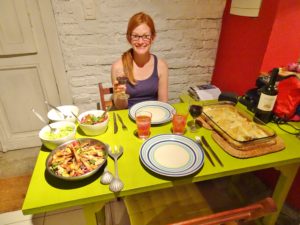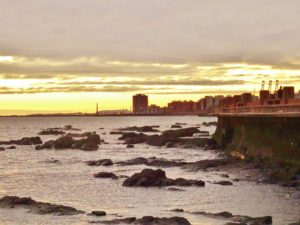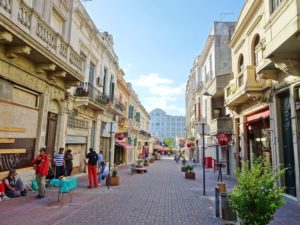After Iguazu falls we spent a few days in Buenos Aires before heading off to Uruguay. At this point we had just over two weeks of our trip left, time for a little exploration of Uruguay before heading back to Buenos Aires for our final weekend.
We started our Uruguayan travels in the town of Colonia-del-Sacramento, known locally as Colonia. It’s a small town with a beautiful historic centre, a nice place to spend a bit of time relaxing after hectic Buenos Aires.
We arrived by boat from Buenos Aires on the Colonia Express ferry, covering the 27 miles of the Rio Plata between Argentina and Uruguay in about an hour and a half. We arrived at a fairly run down looking port, heading through old shipping containers made into a makeshift walkway and past some sad looking buildings. Then suddenly we came into a new terminal building, very smart but unfinished and not quite connected to the port just yet! From this arrival we weren’t quite sure what to make of Uruguay yet.
We walked to our Airbnb place and were shown around by a friend of the owner (the owner being away studying at the time). We were staying in a large old colonial house, complete with high ceilings, tiled floors and wooden shutters. After wandering around for a bit we worked out it used to be a full-time hostel but now only a few of the rooms are rented for Airbnb. As we were there in the quieter season, it was only us and one other couple staying. The next day they checked out and we had the place to ourselves!
The weather had turned suddenly that day and it was cooler and overcast. We decided we’d go out for a walk anyway and went to explore the old town centre. The centre is really beautiful, lots of crumbling grand colonial buildings and cobbled streets. We were walking down a narrow cobbled street, the twists and turns suddenly revealed a view to the sea with the sun just setting on the horizon. Walking to the waterfront we stood and watched a beautiful sunset, lighting up the clouds just perfectly. What a welcome to Uruguay.
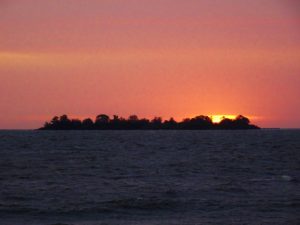
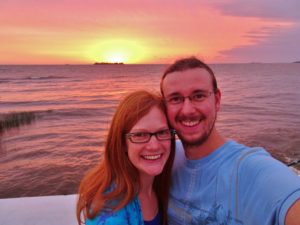
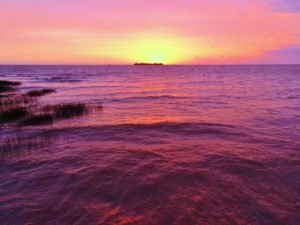
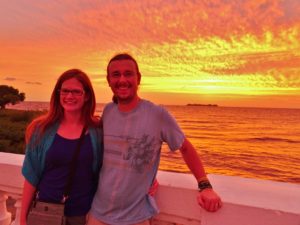
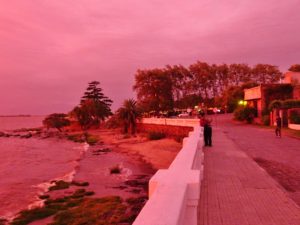
After the sunset we wandered a little further, finding a microbrewery Chris had seen on TripAdvisor, but it was closed until later (like the Argentines, the Uruguayans don’t start their evenings until late). We stumbled on a small clothes shop. As we had some time to kill I went and tried on a few dresses, the owner had some lovely materials and designs and was really nice and friendly. I ended up buying myself something for a wedding later in the year.
Having distracted ourselves for long enough the microbrewery bar was open. We enjoyed a tasting ‘flight’ of beers. We decided to stay for food at the bar as they did both a traditional and a vegetarian version of a typical Uruguayan dish called Chivito. My version had a steak, ham, egg, cheese and tomato in a bun, served with chips. Chris had the same but with fried vegetables instead of meat. We’d heard it described as a ‘cholesterol bomb’, which is pretty accurate, but it was tasty!
The next day we walked around the old town in the daylight, it was so different. Colonia gets lots of day trippers from Buenos Aires and the town was full of tourists. We climbed the lighthouse and could see all the way back to the skyscrapers of Buenos Aires. That evening we went to a pizzeria, top rated in the town on TripAdvisor and it didn’t disappoint, in fact we enjoyed it so much we decided to make an almost unique decision on this trip and go back the next night too.
On our final day in Colonia we walked along the coast to an outlying suburb where there had been a few different sports stadiums built but then abandoned. This was a slightly odd recommendation from the local tourist information but it turned out to be a nice walk and interesting to see. There was a bullring which had only seen eight fights, it opened in 1910 and two years later bullfighting was banned in Uruguay. It was then left abandoned and was in the process of falling down. There was also a horse racetrack (still in use) and a closed up building that had been used for Basque Polota, a game that resembles squash played in the Basque country and in some South American countries. We wandered past and looped back along the coast, stopping to treat ourselves to some churros rellanos (like long deep fried doughnuts, filled with dulce de leche, the caramel sauce you find everywhere in Uruguay and Argentina). We went and bought a few nice things from a local artists market, including birthday presents for our mums, it was nice to wander around a market selling handmade tasteful crafts and not just touristy things.
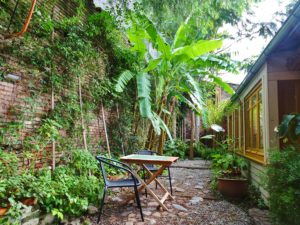
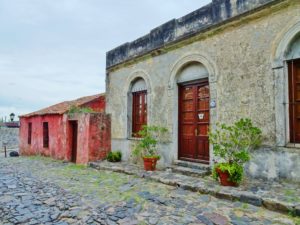
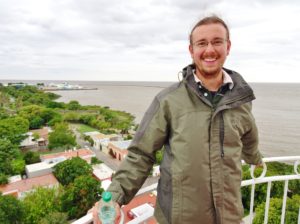
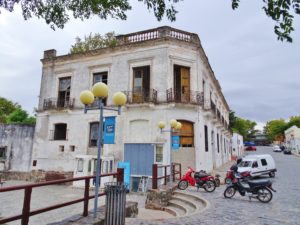
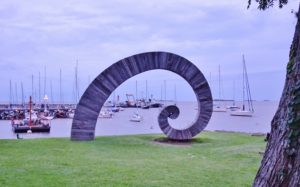
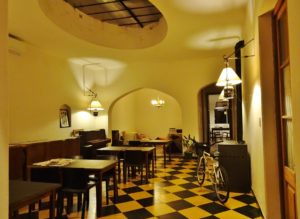
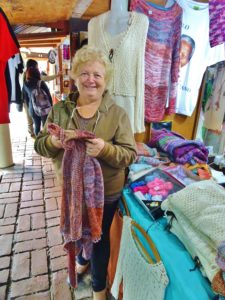
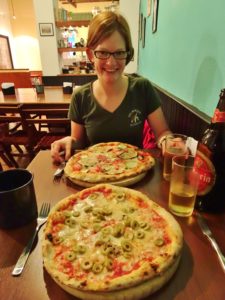
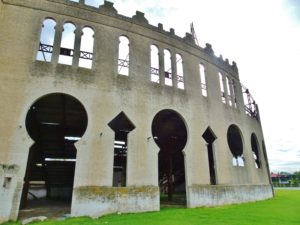
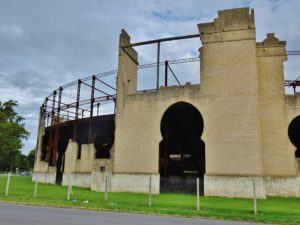
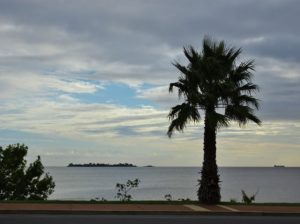
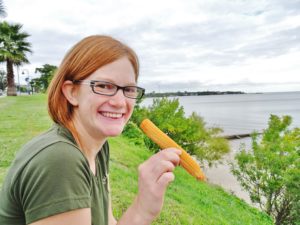
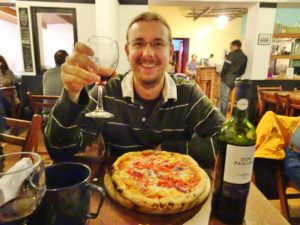
The next day we headed to Montevideo, the capital of Uruguay. We had another Airbnb booked here. We were finding hostel accommodation hard to come by that week, and our host Fernando explained it was Semana Turismo. This means tourist week and is what they call the Easter week in Uruguay. This is the first South American country we’ve been to that is not Catholic, and actually hasn’t had a state religion since the early 1900s. Fernando and his family were going away for the rest of the week, we met them briefly and they gave us a quick run through of what to see in the city before leaving us to it. Our apartment for the next few nights was lovely, and the supermarket nearby was well-stocked, so we decided to cook in and enjoy our living room and tiny outdoor terrace.
The weather was beautiful whilst we were in Montevideo and we used the free bikes in the house to cycle along the ‘ramblas’ or promenade by the sea. Setting off for just a quick bike ride late one afternoon, we ended up cycling 17km, only coming back because the sun was setting. Everyone seemed to be out and about with their friends and family, walking and cycling and all drinking their maté, it was a lovely glimpse into the very relaxed Uruguayan life. We thought maté was big in Argentina but I think the Uruguayans love it even more, it’s very normal to see people walking along with a flask of hot water clutching their maté gourd. Maté is a sort of looseleaf herbal tea that you drink from an open cup/bowl through a metal straw. The straw has a built in filter so that you don’t drink the tea leaves. We tried some in Iguazu, it’s quite bitter tasting, definitely an acquired taste, but is hugely popular.
Whilst in Montevideo we walked around the old town, there are several old European feeling plazas and lots of colonial buildings. Apparently it gets used for filming scenes set in Cuba as it has a similar feel. There was an impressive mausoleum to General Artigas, who helped start the drive for independence from the Spanish. We went to a really interesting museum about the 1972 plan crash over the Andes, where the survivors managed to live for two months in the mountains before being rescued.
We had a great few days in Colonia and Montevideo, enjoying the more relaxed pace after Argentina and getting to know part of this small and interesting country. After just a few hours in Colonia we knew we were going to enjoy Uruguay and were looking forward to seeing more. The next post will be about our last South American road trip around the coast and a little venture into the interior of Uruguay.
